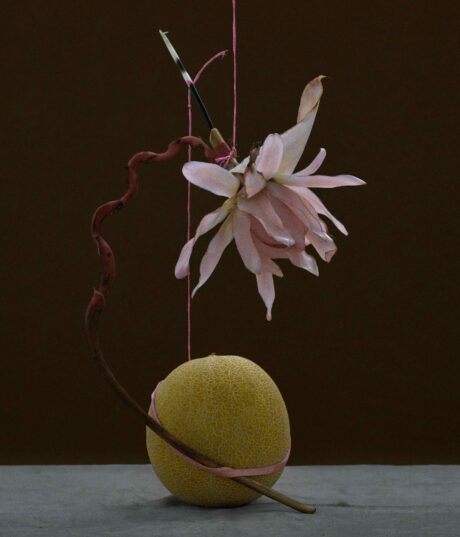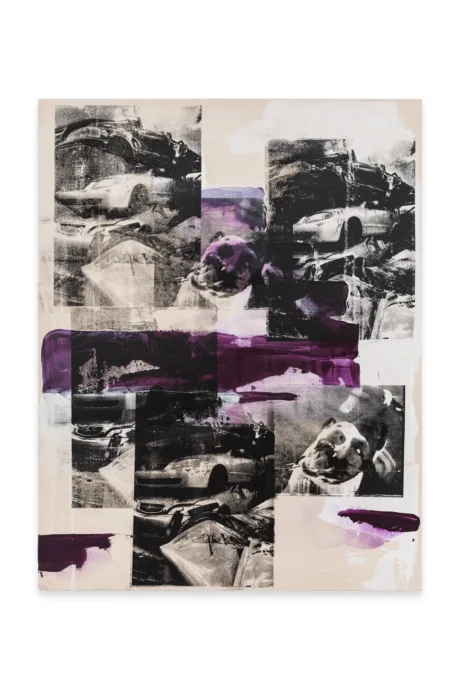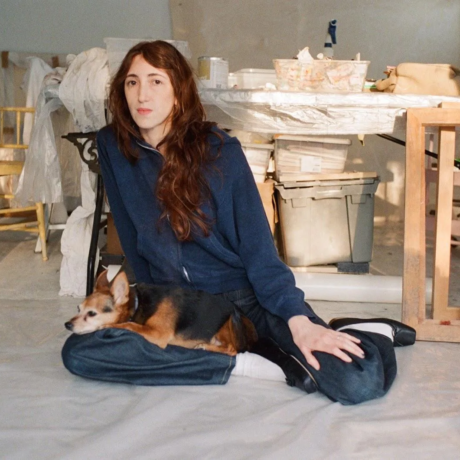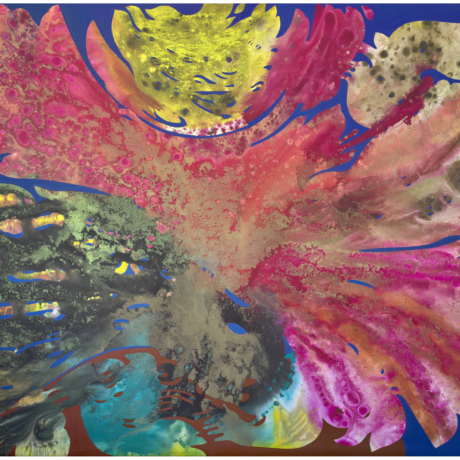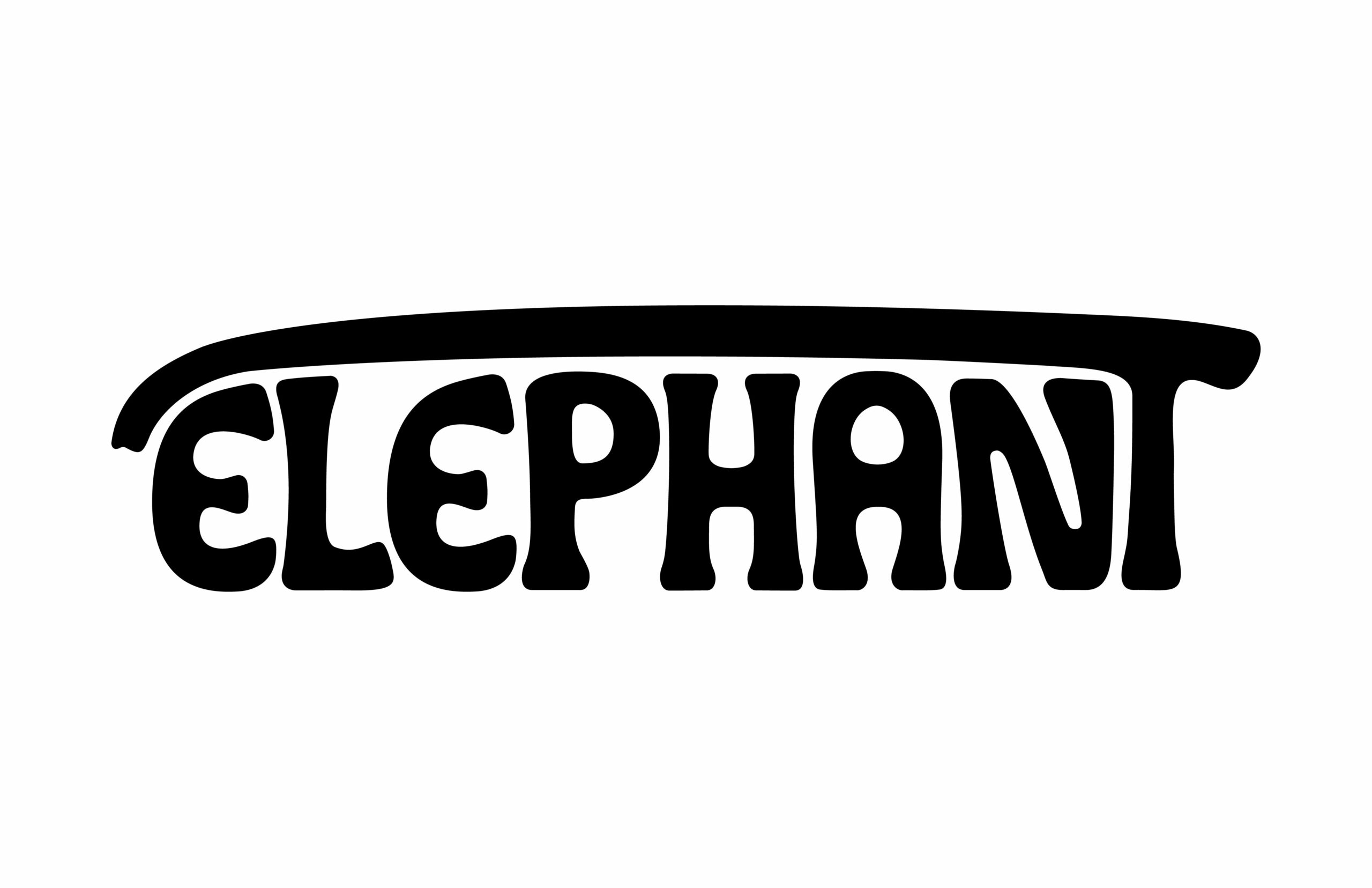Sam Moore speaks with Christine Sun Kim and Thomas Mader about 1880 THAT, an exhibition that transform a pivotal moment of Deaf oppression into a darkly playful exploration of sign language and the right to communicate.
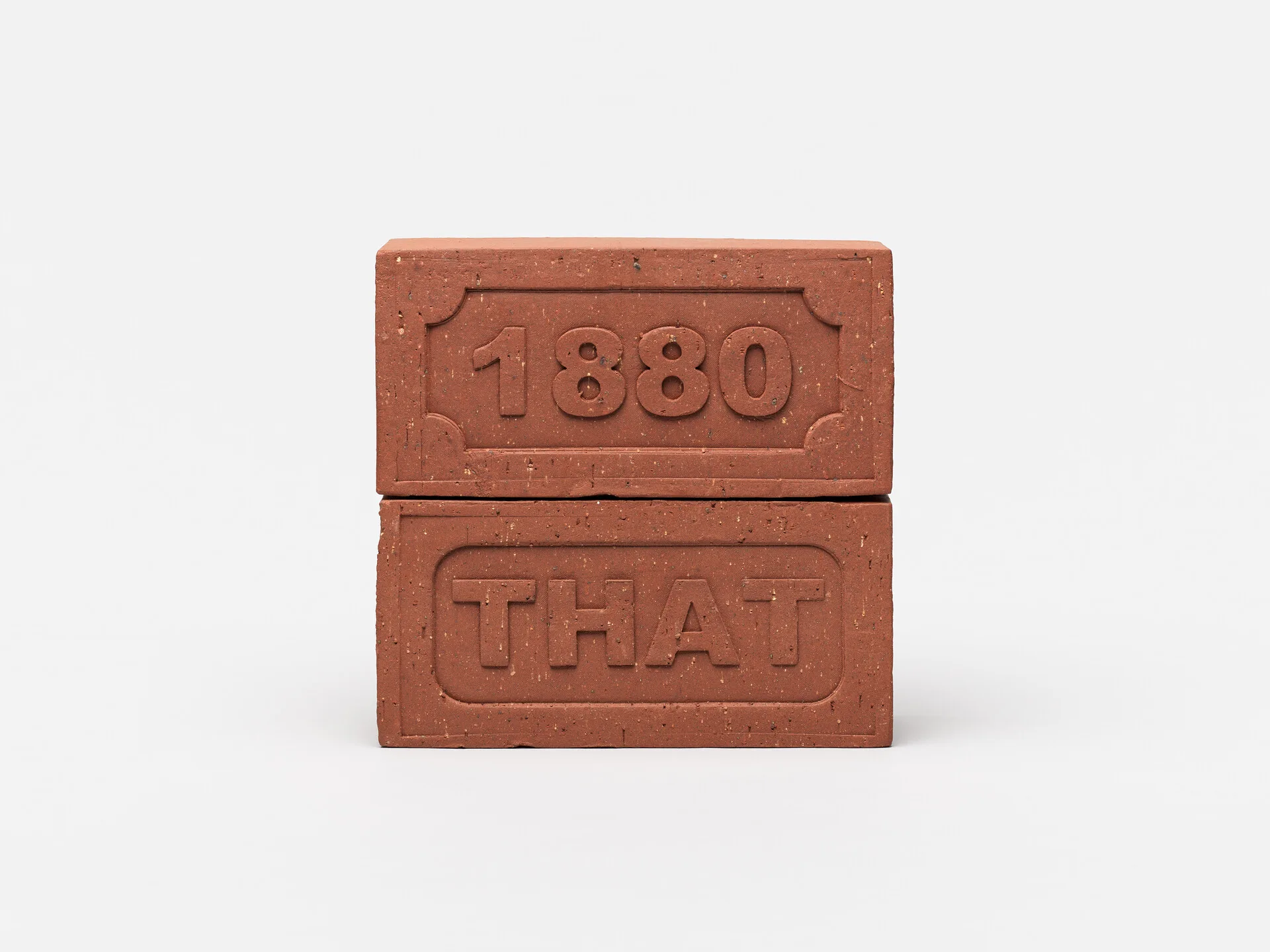
There are certain words that Christine Sun Kim and Thomas Mader, married artistic collaborators, are loathe to see attached to 1880 THAT. Their newest exhibition, at the Wellcome Collection, takes the 1880 Milan Conference – an albatross around the neck of the way Deaf people have been educated for over a century – as a jumping-off point to explore ideas around language, identity, and the narrative of history. But both artists seem to flinch when the word “educational” is brought up in relation to their work.
“It was pretty quickly that we decided, okay, we’re not historians,” Mader tells me, “and this is not a historically accurate perspective.” He’s sat next to Kim; both are opposite me, and I’m joined by two American Sign Language (ASL) interpreters – Helsa B. Borinstein and Beth Staehle – in an office just down the corridor from the gallery that’s hosting 1880 THAT. I’ve caught them in the eye of the storm of the exhibition’s press view; introducing the show to a gallery full of people, and moving between a series of interviews without missing a beat. “But that we get to have some fun with it and get to engage with words and visuals, and all of these different materials that are part of the show, and I think that helped us approach the topic.” There’s a tension in 1880 THAT, between the political reality in which the show exists, and the playful way in which these themes are explored.
“The U.S. is going through these massive cuts right now, federal funding is being cut from universities all over,” Kim tells me, placing the historical context of the show in the present day, “and what we’ve created just happens to be very relevant, so it does feel very heavy.” Some of this manifests in the scale of the sculpted works on display; it opens with a brick commemorating the Milan conference, an image that’s filled with multiple meanings: the building of something brick by brick, the political power of throwing one. This is what’s at the core of 1880 THAT, a fluid approach to language, whether spoken or signed, that asks people to consider the multiple meanings and perspectives available to them.
For the two artists, the genesis of this show was discovering a plaque dedicated to Alexander Graham Bell (“AGB,” as she and Mader call him, with the familiarity of someone they’ve known forever) while travelling in Scotland to visit a friend; Kim shows me a picture of her giving the plaque the finger, and there’s a spark of punk rebellion in her eyes, both in the photo and as she sits across from me. “When I saw it,” Kim tells me, “I thought: you’ve got a plaque. You’ve had this huge impact on people. But 1880 doesn’t have a plaque. This event that also had a huge impact on people, so why does he have this way of memorialising who he is, and this event doesn’t?” She confesses that this has been a difficult thing to memorialise: “I’ve been angry about this for a long time, this has been brewing for a long time.”
While there are a lot of complicated, often politically charged feelings running through 1880 THAT, anger isn’t often one of them; there’s a politically charged weariness to ATTENTION (2022/25), a pair of giant inflatable arms – reminiscent of the windswept figures that linger outside car dealerships – one of which points towards Milan, and the other towards the Houses of Parliament; their constant impact leaving dents against the walls of the Wellcome Collection, a reminder not only of the continued presence of Deaf communities but the physicality of political action itself. “It’s really showing a period of time where we want to move forward, but we’re still talking about the same things,” Kim tells me, “the same things have to be advocated for.”
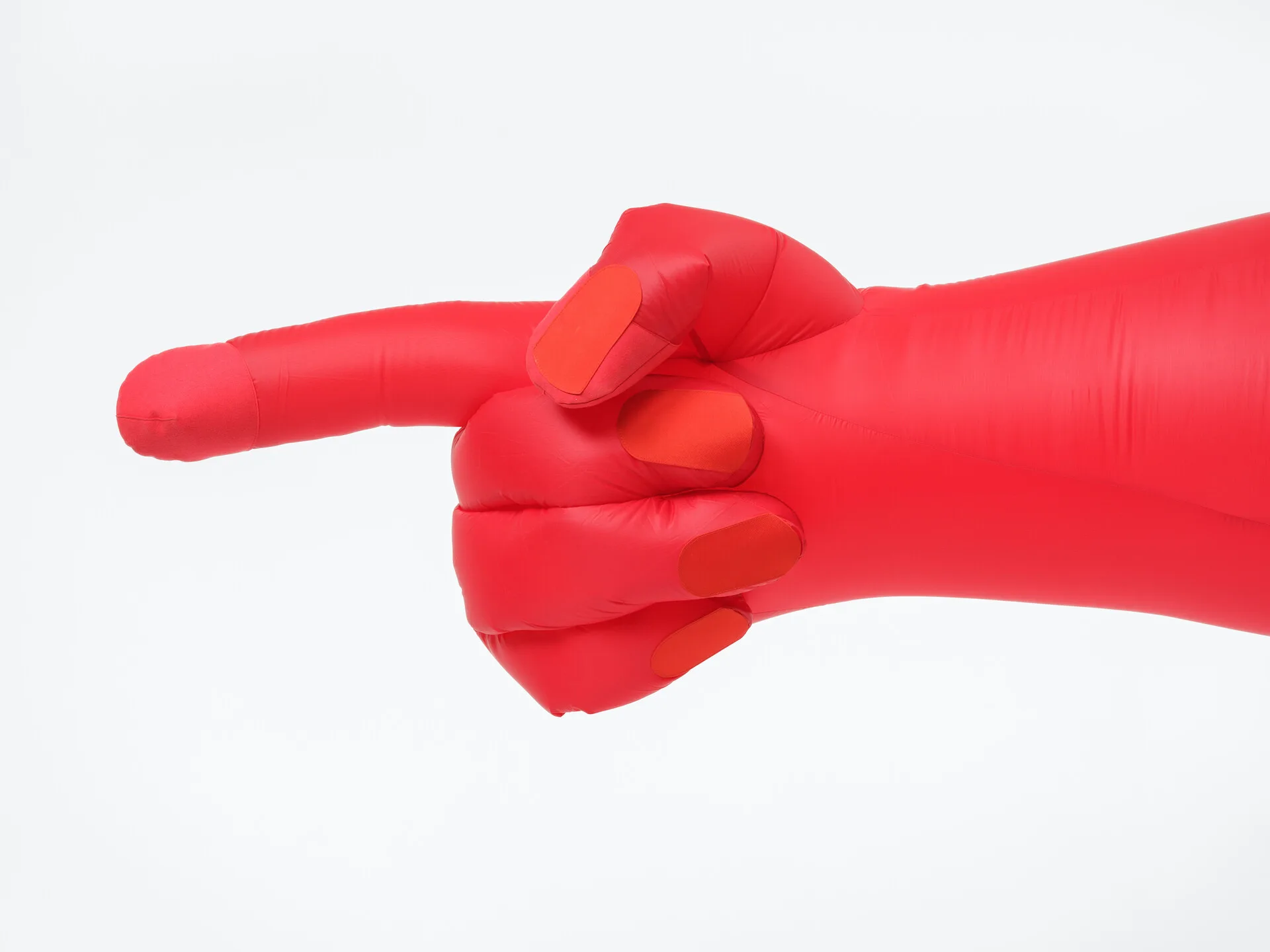
One of the most important relationships in the show is the one between language and embodiment; there are fragments of the body appearing throughout 1880 THAT, from the inflatable arms of ATTENTION to the sculpture Look Up My Nose, and the way a peephole becomes a stand-in for the human eye in the film piece F on Eye (in American Sign Language, the letter ‘F’, when brought up to your eye, looks like a peephole). “We’ve actually had to become disembodied,” Kim tells me, “in order to make a commentary on how embodied American Sign Language is. We’ve had to take the body apart, which is quite ironic.” Mader stresses the importance of this in relation to the way sign language was discussed during the Milan Conference and in the aftermath: “AGB and his followers had beef with sign language because it was too out there, too noisy, took up too much space, wasn’t what a Victorian mindset would reference when thinking about these things like being modest and proper.” It’s ironic, Kim tells me, that this show would end up being about body language when it never comes up in her individual practice or Mader’s, and yet when they work together, it finds itself front and centre as a theme: another large brick, emblazoned with the words “I AM NOT CROSS” reveals just how much words alone aren’t able to capture language and meaning.
At the beginning, Kim and Mader’s collective practice wasn’t a particularly serious thing. “When we were new to each other, that was the most exciting part,” Kim tells me, and that only over time has a collective practice emerged. “Sometimes we might find something funny,” she says, explaining how their collective ideas emerge, “and we become obsessed with that funny thing. Or we might have a communication breakdown and we take that and we turn it into a whole thing. So a lot of these things come from organic communication that’s taken place between Tom and myself.” “But also,” Tom interjects, “in all honesty, a lot of our ideas come from when we’re getting ready for bed, and everyone’s on their phone going CHECK OUT THIS MEME,” with that anarchic streak that comes through in the show.
Almost all of 1880 THAT is about the abundance of language; its possibilities in physicality, written text, spoken word, and all the things in between. But there’s one piece that approaches it differently; instead of taking a maximalist approach to language, What’s Left? – a mimed comedy inspired by Sesame Street – strips language beyond its bare essentials; nothing is spoken or signed, and two characters can communicate only in fragments. Kim tells me that this is a piece about survival, that Sesame Street is about “how do we fucking do this life thing?” She says that she has “fear about the future, concerns about getting through this,” with What’s Left? offering a look at one of the ways in which people might survive if their language is taken from them; Kim pushes back on the idea that the piece is about a lack of language, thinking of it instead as something rebellious, politically charged. “I think it’s about what would happen if, after 1880, sign language was pushed underground,” Mader tells me, “how can you communicate without being too visible?”
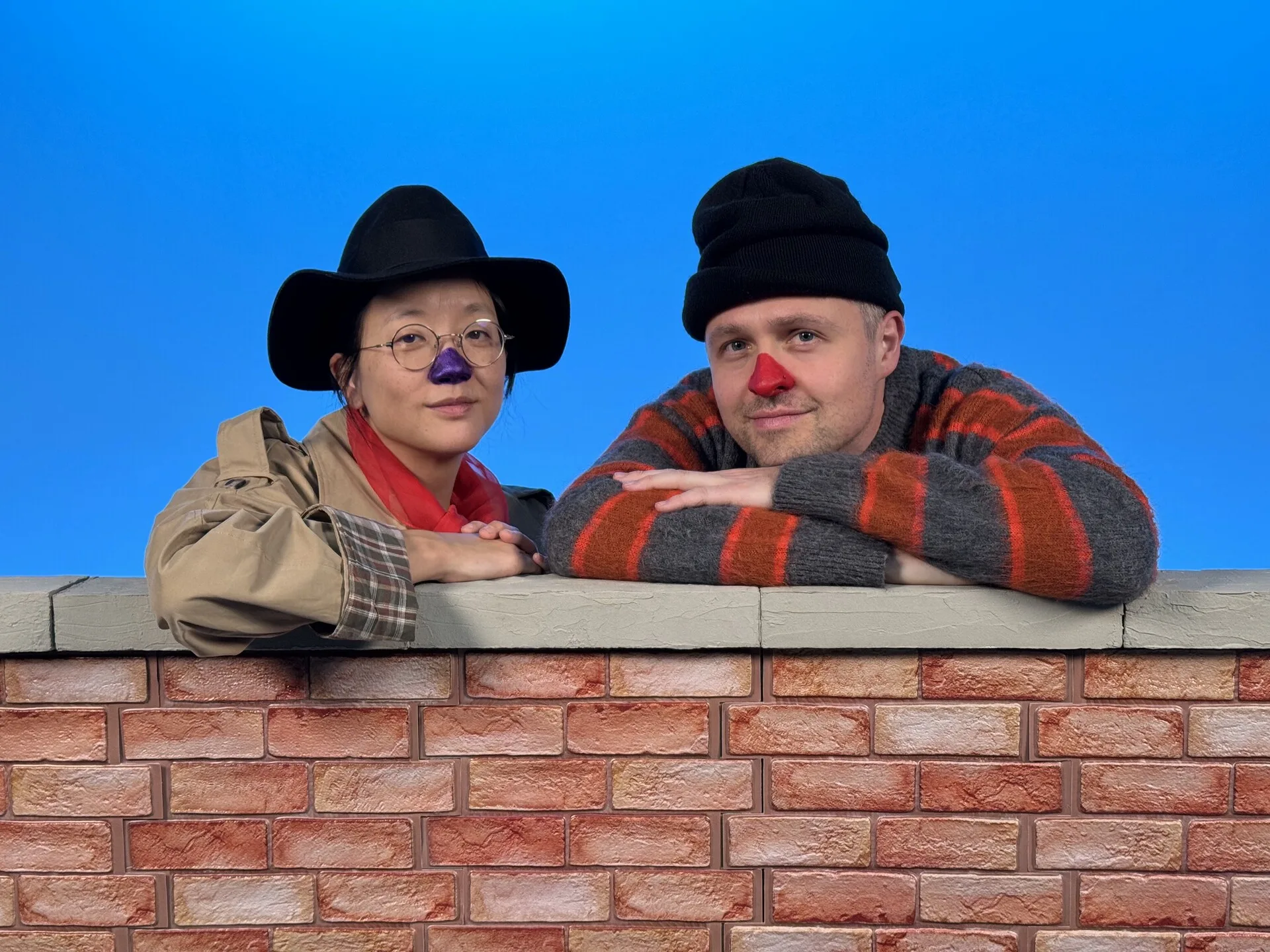
In talking about this piece, Kim is reminded of The Man in the High Castle, Phillip K. Dick’s alternate history of a post-World War 2 society in which the Allies lost. She tells me that this is one of her favourite books, saying “I often do think about the what-ifs, what are the consequences of if one thing happened versus if another decision had been made. So because of the impact of 1880, the National Association of the Deaf was established.” She tells me about the safe spaces that sprung up for Deaf communities in the wake of 1880 – that churches, in particular, were a safe space – and that it’s through things like this that Deaf culture can persist, and these stories can still be told. In 1880 THAT, Kim and Mader not only tell these historical stories, but invite us to consider new possibilities for the future, using language as a roadmap for what was, and what might still be.
Written by Sam Moore
Christine Sun Kim and Thomas Mader: 1880 THAT continues at the Wellcome Collection, London, until November 16, 2025.
